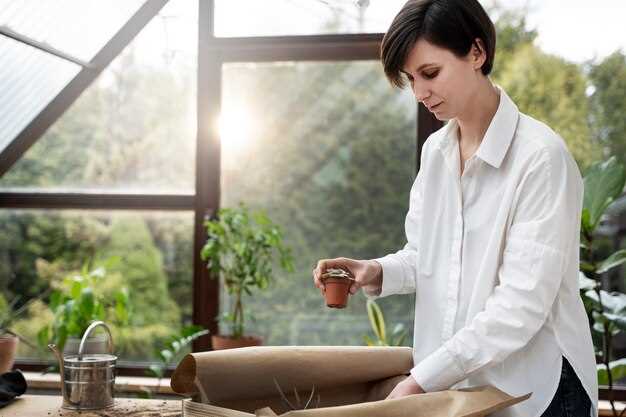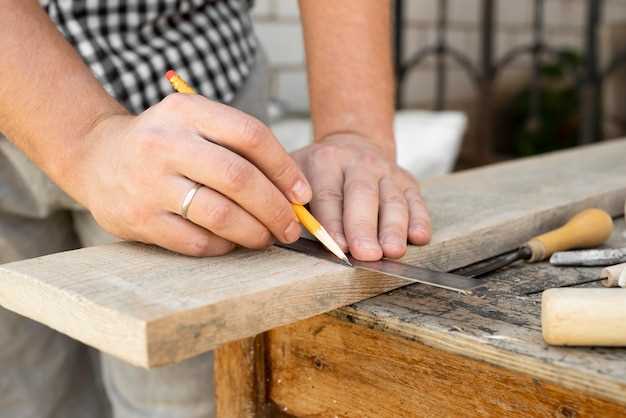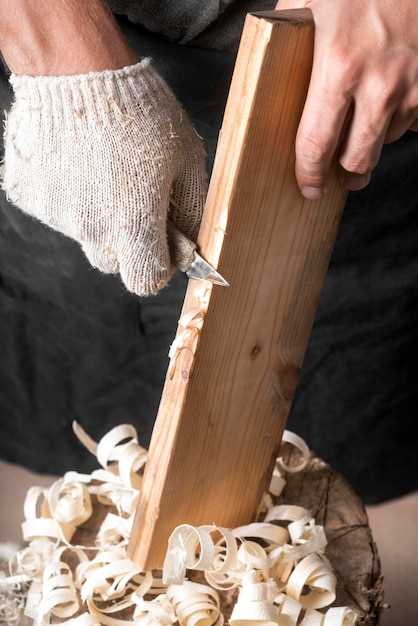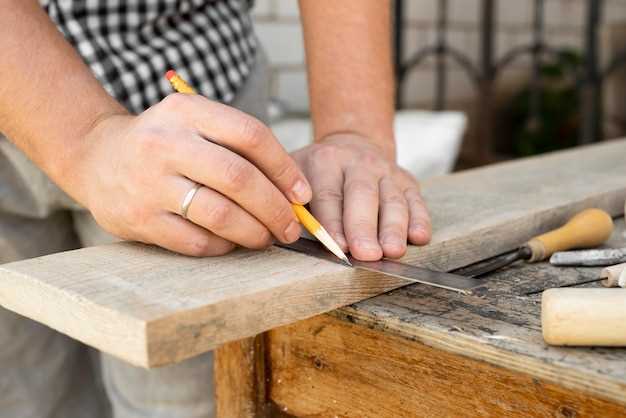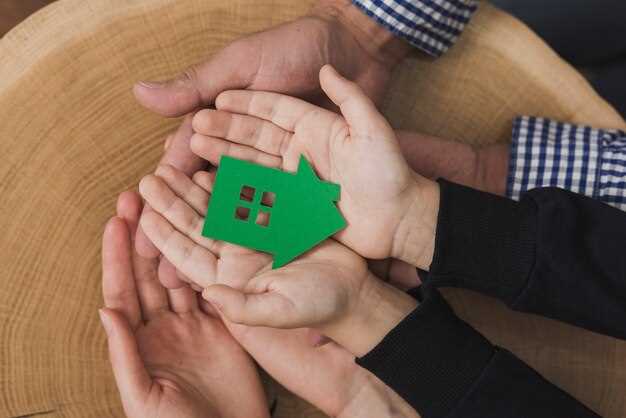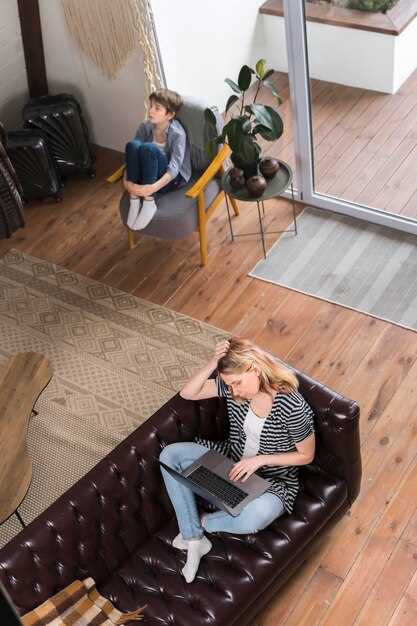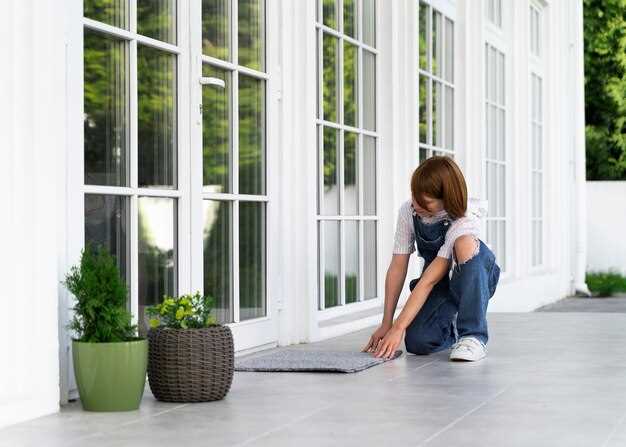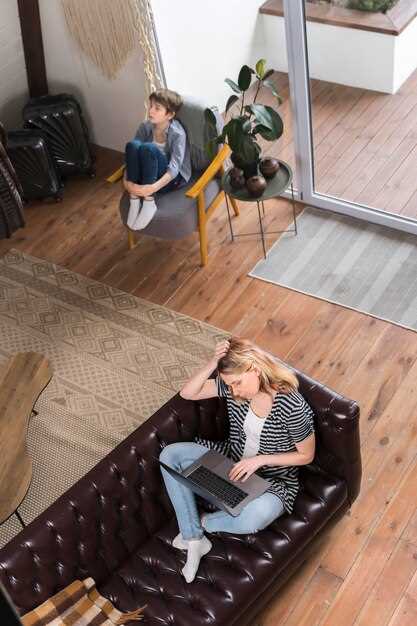Small Space Design with Sustainable Materials
Choose furniture made from reclaimed wood to instantly elevate the aesthetic of your small living space. This approach not only enhances the character of your home but also reduces the demand for new resources. Look for pieces that showcase the natural imperfections and unique grains of the wood, adding a personalized touch.
Incorporate textiles made from organic cotton or linen for soft furnishings. These materials provide comfort while ensuring you contribute to a more sustainable future. Look for certified organic products to ensure they meet environmental standards.
Consider multifunctional pieces like a coffee table that doubles as storage. This design choice maximizes utility without overcrowding the space. Pair it with eco-friendly paints or finishes that have low VOCs, keeping indoor air quality in check.
Optimize your wall space by installing shelves made from recycled materials. This not only displays your favorite items but also keeps the floor area clear. Decorative boxes crafted from sustainable resources can further help in organizing your space effectively.
Finally, don’t forget about plants! Incorporating indoor greenery boosts air quality and enhances ambiance. Choose pots made from biodegradable materials to keep the eco-friendly vibe consistent throughout your home. By focusing on these sustainable elements, your small space can be both stylish and environmentally responsible.
Choosing Eco-Friendly Materials for Compact Living

Opt for bamboo for furniture and shelving. It grows rapidly and doesn’t require pesticides or fertilizers, making it a sustainable choice. Look for products that are certified by the Forest Stewardship Council (FSC) to ensure responsible sourcing.
Consider reclaimed wood for your flooring or accent walls. Repurposing old timber reduces waste and adds unique character to your space. Seek out local suppliers to minimize transportation emissions.
Eco-friendly paints enhance indoor air quality. Choose low-VOC or zero-VOC options to minimize harmful chemical emissions. Brands often provide a wide array of colors, so you won’t sacrifice aesthetics for sustainability.
For textiles, opt for organic cotton or linen. These fabrics are grown without harmful chemicals, promoting healthier living. Many companies now offer stylish organic options for upholstery and curtains.
Incorporate recycled materials into decor. Items made from recycled glass, metal, or plastics can add interesting textures and colors while supporting circular economies. Look for local artisans or online marketplaces specializing in these products.
Utilize natural flooring options like cork or bamboo. Cork is harvested sustainably and provides excellent insulation. Bamboo offers a similar benefit with a modern aesthetic, perfect for small spaces.
Choose energy-efficient appliances when completing your compact living area. Look for those with Energy Star ratings to ensure lower energy consumption. This choice benefits both the environment and your utility bills.
Explore versatile furniture designs, such as multi-functional pieces made from sustainable materials. Sofa beds or expandable tables maximize space and reduce the need for additional furnishings. Look for items crafted from responsibly sourced wood or eco-friendly composites.
Enhance your space with plants that improve air quality. Use biodegradable planters made from materials like coconut coir or recycled paper. These options support both plant growth and environmental health.
By focusing on these eco-friendly materials, you create a compact living space that reflects your values while maximizing functionality and style.
Maximizing Storage with Sustainable Wood Furniture

Opt for multi-functional furniture pieces made from sustainably sourced wood to enhance storage in small spaces. Select ottomans or benches that provide hidden compartments for blankets or books, effortlessly merging style and utility.
Craft Your Own Solutions
Consider customizing wooden shelves that fit your specific dimensions. Wall-mounted shelves free up floor space while offering a chic display for plants or collectibles. Incorporate cubbies made of reclaimed wood for a rustic touch; they make it easy to organize toys or craft supplies.
Smart Use of Vertical Space
Utilize tall cabinets to maximize vertical storage. Choose pieces with a clean design to create an airy feel while providing ample storage for kitchenware or linens. Pair them with wooden hooks or hanging organizers that add dimension without sacrificing access to items.
Creating an Eco-Conscious Color Palette for Small Spaces

Select a color palette that reflects nature to create an eco-conscious atmosphere in tight areas. Earthy tones, such as terracotta, muted greens, and soft browns, can enhance the natural light and make spaces feel larger.
Choose Non-Toxic Paints
Prioritize paints labeled as low-VOC (volatile organic compounds) or zero-VOC. These options reduce harmful emissions and improve indoor air quality. Brands like Behr and Benjamin Moore offer selections that align with sustainability goals.
Incorporate Natural Textures
Layer textures to add depth while keeping the color scheme cohesive:
- Opt for jute or sisal rugs for a warm base.
- Introduce wooden furniture with natural finishes for an organic feel.
- Utilize linen or organic cotton curtains to soften the look.
Combine these elements with your color palette for a harmonious, inviting space. Mixing different textures and colors helps maintain visual interest while adhering to eco-friendly principles.
Incorporating Reclaimed Materials in Small Room Design
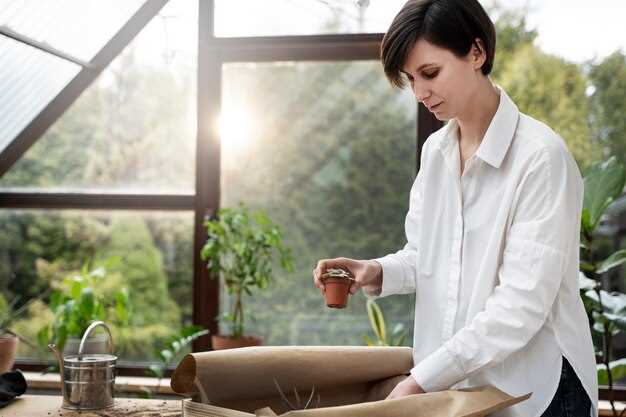
Use reclaimed wood for accent walls or shelving in small spaces. This material adds character and warmth while enhancing the room’s aesthetics. Select pieces with unique textures or colors to serve as focal points and maximize visual interest.
Furniture and Decor
Choose reclaimed furniture, such as tables or chairs, to add a sense of history and sustainability. These items often come with stories that can enrich your space. Pair them with modern elements to create a delightful contrast that doesn’t overwhelm the area.
Flooring Options
Consider reclaimed hardwood or vintage tiles for flooring. These choices not only contribute to eco-friendliness but also offer durability and style. Use area rugs made from recycled materials to define spaces and add comfort without occupying too much room.
Energy-Efficient Lighting Solutions for Tiny Homes
Use LED lights throughout your tiny home for optimal energy savings. LEDs consume up to 80% less energy compared to traditional incandescent bulbs, significantly reducing your power bill. They also last much longer, up to 25,000 hours, which means fewer replacements and less waste.
Layered Lighting Approaches
Implement a layered lighting strategy that combines ambient, task, and accent lighting. This creates versatility while maintaining a cozy atmosphere. For task lighting, consider focused fixtures like under-cabinet lights or pendant lights above workspaces.
Smart Solutions
Incorporate smart lighting systems with programmable features. These allow you to control lighting based on your schedule, ensuring lights are off when you’re not home. Consider motion sensors that activate lights only when needed, reducing unnecessary energy consumption.
| Lighting Type | Energy Consumption | Average Lifespan |
|---|---|---|
| Incandescent Bulb | 60 Watts | 1,000 hours |
| LED Bulb | 10 Watts | 25,000 hours |
| CFL Bulb | 13-15 Watts | 10,000 hours |
Maximize natural light by strategically placing mirrors and light-colored surfaces. This amplifies daylight, reducing the need for artificial lighting during the day. Use blackout shades for windows to control light during mornings or evenings.
Opt for solar-powered outdoor lighting to minimize reliance on grid electricity. These fixtures charge during the day and provide illumination at night without additional cost. Incorporate solar path lights in your garden or along walkways.
Landscaping Small Outdoor Areas with Sustainable Plants
Choose native plants that thrive in your local climate. These species require less water and minimal maintenance, making them perfect for small outdoor spaces. Examples include lavender and coneflower, which attract pollinators and add color without heavy resource input.
Layering Plants
Create visual interest by layering plants of varying heights. Position taller plants toward the back or center and shorter ones in front. Use ornamental grasses, such as blue fescue, to add texture. This approach maximizes space while ensuring every plant receives adequate sunlight.
Incorporating Edibles
Consider mixing in edible plants like herbs or dwarf fruit trees. They provide beauty and functionality, allowing you to enjoy fresh produce right from your small garden. Varieties such as dwarf tomatoes or basil take up little space while enhancing sustainability.
Implement rain gardens or permeable pathways to manage water runoff. Utilize permeable pavers or gravel, ensuring the area remains eco-friendly. Select ground covers like creeping thyme to fill gaps and prevent erosion.
Maintain a simple design that enhances the area’s natural features without overwhelming it. By focusing on sustainable plants, you contribute positively to the environment while creating a delightful outdoor retreat.
DIY Projects Using Eco-Friendly Materials for Small Spaces
Create vertical gardens using reclaimed wood for planters. Cut wooden pallets into smaller sections, sand them well, and stack vertically to maximize floor space while bringing plants indoors. Paint them with non-toxic, water-based paints to add an aesthetic touch.
Transform old furniture into multi-functional pieces. Use a vintage ladder as a bookshelf to display books and plants. This not only saves space but also adds character to your room. Refinish old wooden chairs with eco-friendly stains to give them a new life.
- Build a coffee table using recycled wood. Design it with storage compartments to keep magazines and remotes organized.
- Make wall-mounted shelves from reclaimed barn wood. This saves floor space and offers a rustic charm while displaying decor or books.
- Create a compact desk from an old door. Sand it down, paint, or varnish with eco-friendly finish, and mount it against a wall to save space.
Use fabric scraps to create wall art. Stitch or glue together different pieces on a canvas to form a unique, textured design. This is a simple project that adds color and personality without bulk.
- Gather fabric scraps or upcycle old clothes.
- Arrange them in a pattern and secure with glue or stitches.
- Frame the finished piece or hang it directly on the wall.
Install cork tiles on a small section of the wall for sound absorption and a pop of style. Cork is sustainable and provides warmth to a space. Apply non-toxic adhesive for installation.
Lastly, upcycle glass jars into stylish storage solutions. Paint them with eco-friendly paint, label them, and use them for organizing small items on shelves or desks. They keep your space tidy while adding a personal touch.
Maintaining Indoor Air Quality with Sustainable Choices
Choose low-VOC (volatile organic compounds) paints and finishes. These options significantly reduce harmful emissions, ensuring a healthier indoor environment. Brands like Benjamin Moore and Sherwin-Williams offer eco-friendly alternatives that provide excellent coverage without the toxic side effects.
Incorporate natural materials like bamboo and cork into your space. These materials not only offer aesthetic value but also contribute to better air quality, as they tend to be free from harmful chemicals found in synthetic products. They help regulate humidity levels and can even absorb some airborne pollutants.
Utilizing Plants for Purification
Add indoor plants known for air-purifying qualities. Species such as snake plants, peace lilies, and spider plants effectively remove toxins from the air while enhancing the beauty of your small space. Position these plants strategically to maximize their benefits.
Enhancing Ventilation
Improve ventilation by opening windows regularly to allow fresh air circulation. Consider installing an energy recovery ventilator (ERV) if outdoor air quality permits. This system exchanges stale indoor air for fresh air while filtering out pollutants, thus maintaining indoor air purity while being energy-efficient.
Video:
What If We Could Design Our Buildings In A Way That Was Healthy For Both People And The Planet?
What If We Could Design Our Buildings In A Way That Was Healthy For Both People And The Planet? by ArchDaily 603,711 views 1 year ago 14 minutes, 43 seconds
Q&A:
What types of sustainable materials are best for small space design?
Some of the best sustainable materials for small space design include bamboo, reclaimed wood, and recycled metal. Bamboo is a fast-growing plant that provides a strong, durable material for flooring and furniture. Reclaimed wood adds character and history to a space while reducing the need for new lumber. Recycled metal can be used in furniture and decorative features, providing a modern touch while being environmentally friendly. These materials not only promote sustainability but also help in maximizing space through their versatility.
How can I incorporate sustainable materials into my small apartment?
There are several ways to incorporate sustainable materials into your small apartment. Start by choosing furniture made from reclaimed or recycled materials. Look for multi-functional furniture pieces that serve more than one purpose, like a coffee table with storage. Use eco-friendly paint and finishes to ensure air quality and safety. Additionally, consider using natural textiles for curtains and upholstery to create a healthier living environment. Lastly, add indoor plants which not only beautify the space but also improve air quality.
Are there specific design strategies for small spaces that use sustainable materials?
Yes, there are several design strategies for small spaces that prioritize sustainable materials. One effective strategy is the use of vertical space; for example, installing shelves made from reclaimed wood can maximize storage without taking up much floor space. Another approach is to choose light-colored, sustainable materials to make the space feel larger and more open. Mirrors can also be used to reflect light and create the illusion of a bigger area. Plan your layout with a focus on flow and accessibility, ensuring that furniture items are made from sustainable sources.
What are the benefits of using sustainable materials in small space design?
Using sustainable materials in small space design has many benefits. Firstly, it contributes to a healthier environment by minimizing waste and pollution. Sustainable materials often have lower VOC emissions, improving indoor air quality. From a design perspective, these materials can enhance the aesthetic appeal of a space, adding a unique character and warmth. Additionally, utilizing eco-friendly products can often lead to long-term cost savings, as they are typically more durable and require less maintenance than conventional materials.
Can sustainable design work with various styles in small spaces?
Absolutely! Sustainable design can effectively complement various styles in small spaces, from modern minimalism to rustic charm. For example, a minimalist approach can incorporate sleek furniture made from bamboo, while a more industrial style can feature reclaimed wood and recycled metal elements. Coastal themes can use natural fibers and light colors to create a fresh look using sustainable textiles. By thoughtfully selecting and combining materials, you can maintain your preferred design style while adhering to eco-friendly principles.
What are some sustainable materials suitable for small space design?
When designing small spaces with sustainability in mind, a variety of materials can be utilized. Bamboo is an excellent option due to its rapid growth and renewability. Reclaimed wood is another good choice, providing character and reducing waste. For flooring, cork is a sustainable alternative that is both durable and comfortable. Low-VOC paints and finishes can ensure healthier indoor air quality. Additionally, using recycled metals or glass can enhance aesthetic appeal while promoting eco-friendly practices.
How can I maximize functionality in a small space while using sustainable materials?
Maximizing functionality in a small space with sustainable materials requires thoughtful planning and creativity. Start by selecting multi-purpose furniture, such as a sofa bed or an ottoman with storage. Use modular shelving made of reclaimed wood to display items and keep them organized. Incorporate collapsible or foldable tables to save space when not in use. Also, consider built-in storage solutions that utilize vertical space efficiently. Utilizing natural light through strategically placed mirrors and lighter color palettes can create an illusion of space. Lastly, integrating plants can improve air quality while adding a touch of nature, contributing to the overall sustainable design.
